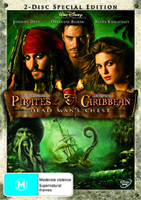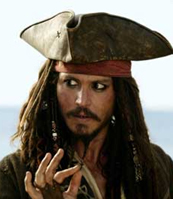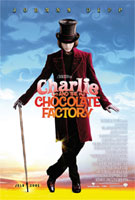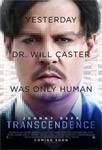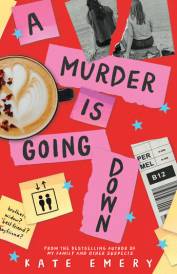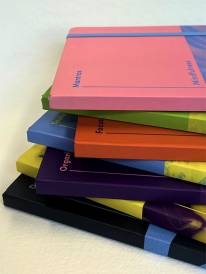Johnny Depp Murder on the Orient Express
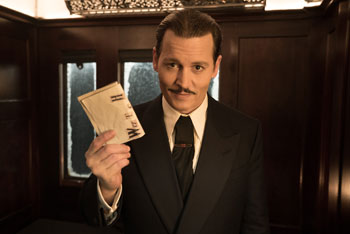
Everyone Is A Suspect
Cast: Johnny Depp, Penelope Cruz, Michelle Pfeiffer, Daisy Ridle
Director: Kenneth Branagh
Genre: Crime, Drama
Rated: M
Running Time: 114 minutes
Synopsis: In the most timeless of whodunits, Murder on the Orient Express follows renowned detective Hercule Poirot (Kenneth Branagh) as he attempts to solve what would become one of the most infamous crimes in history.
After a shocking murder of a wealthy businessman on the lavish European train barreling its way west in the dead of winter, private detective Poirot must use every tool of his trade to uncover which of the train's eclectic passengers is the killer, before he or she strikes again.
Published in 1934, Agatha Christie's novel, Murder on the Orient Express is considered one of the most ingenious stories ever devised. More than 80 years after its publishing, Christie's novel remains beloved by new generations of readers. Kenneth Branagh's stunning retelling of the beloved mystery with its acclaimed ensemble and breathtaking visuals invites audiences to take the most suspenseful train ride of their lives.
Murder on the Orient Express
Release Date: November 9th, 2017
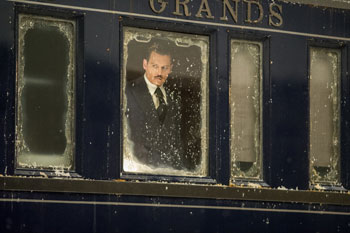 About The Production
About The Production
Agatha Christie's classic mystery, with its richly drawn characters confined to a luxurious passenger train, taut scenes and crisp dialogue, has fixated audiences since the novel's debut in 1934. The Times of London wrote upon its publishing, 'The little grey cells solve once more the seemingly insoluble. Mrs. Christie makes an improbable tale very real, and keeps her readers enthralled and guessing to the end."
Readers have been captivated with the mystery, the crime, the story, and the character of Hercule Poirot for generations. The allure of the Orient Express was magnified by Christie's work, and travelers continue to flock to discover the illustrious compartments and service to this day. Room 411 in the Pera Palace Hotel in Istanbul, where Christie allegedly wrote the novel, also remains a popular destination site. There are societies and clubs the world over dedicated to rediscovering Christie's mysteries, particularly those featuring Hercule Poirot.
Why the endless fascination?
"Agatha Christie is expert at bringing depth (with economy) to the observation of characters, making them distinct and colorful, but also believable. I think she enjoys the literary dazzle of that, but in the Orient Express, you also have glamour. You have snow. You have elegance and the golden age of romance in travel. And, of course, you have a murder," says Kenneth Branagh. This film introduces another generation of moviegoers to an enthralling new interpretation of one of the most beloved mysteries of all time. A 'who's who" of celebrated actors and an acclaimed production team up for the journey.
With everything Agatha Christie, it all starts with the story. But to make a film, of course, you then need to get the rights to that story – and for producers Mark Gordon and Simon Kinberg, that proved to be a near-five-year-long journey. Initially, both men had enquired about the rights separately but soon decided that teaming up would be the best approach.
Gordon and Kinberg subsequently partnered with Ridley Scott. Now it was time to commission a script…
As a huge admirer of Agatha Christie and long-time collaborator with producer Ridley Scott, screenwriter Michael Green (Logan, Blade Runner: 2049) was thrilled when he was asked to bring this fabulous story to the screen. Producer Scott, a Christie fan himself, and an admirer of Sidney Lumet's 1974 version of Murder on the Orient Express, had leapt at the chance to re-explore the book, seeing it a wonderful opportunity to present the author's work to a modern-day audience. Michael Green agrees.
'They're incredible stories with characters that you want to see more and more of," says Michael Green. 'And if you're lucky enough to catch an Agatha Christie book or play at the right age, it's going to stay with you and remain charming in your memory."
But even as a Agatha Christie fan, one story stands out for Michael Green: "I'm very fortunate that my favorite Agatha Christie is, hands down, Murder on the Orient Express. It not only features Poirot, my favorite character of hers, but it's a story that has a surprising ending, along with the fascinating people you meet along the way. The setting is grand and everything about it makes it stand apart in my memory as the special one."
Michael Green met with the Agatha Christie estate to discuss the project: "We all had the same goal: we wanted to bring it into the modern world without changing what's essential to it, without altering its soul, so that a contemporary audience can experience it, believe it and be thrilled by it."
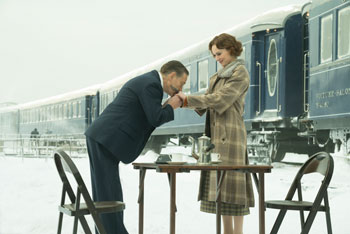 For Michael Green, his interpretation of the classic murder mystery came together when Kenneth Branagh (Henry V, Cinderella) came on board: "Probably the most exciting day in the development process was finding out that Kenneth Branagh was interested in directing and starring in it," says Michael Green. 'I have immense respect and appreciation for him, both as an actor and a director. Suddenly, this hypothetical script I had written became a film - one I could now imagine through Kenneth Branagh's lens and the caliber of the people he would attract to the project."
For Michael Green, his interpretation of the classic murder mystery came together when Kenneth Branagh (Henry V, Cinderella) came on board: "Probably the most exciting day in the development process was finding out that Kenneth Branagh was interested in directing and starring in it," says Michael Green. 'I have immense respect and appreciation for him, both as an actor and a director. Suddenly, this hypothetical script I had written became a film - one I could now imagine through Kenneth Branagh's lens and the caliber of the people he would attract to the project."
Great-grandson of Agatha Christie and Chairman of Agatha Christie Ltd, James Prichard, agrees with Green: "I have watched Kenneth Branagh's films since I was very young - I watched his Henry V as part of my university degree, and to have him on this film, an incredibly talented director and one of the best actors of his generation, to have someone of that quality want to play Poirot gives me an enormous sense of pride."
Known for his love of classics, Kenneth Branagh was a perfect fit from the start. "Fox knew that I loved thrillers, and so they came to me with this most classic of thriller mysteries," recalls the actor/director. 'I think maybe they even knew I liked trains - I certainly liked this title, 'Murder on the Orient Express'. It's always had a special sort of ring to it and it takes you to the golden age of travel. It's also a character piece set in a very confined space, under tremendous tension. There are very interesting disparate characters interacting about the most profound and dangerous of subjects and themes. I read the script by Michael Green, and I was really taken by it."
With no shortage of interpretations of Agatha Christie's work, Kenneth Branagh's desire to revisit these characters started with the depth and compassion Michael Green mined, as well as the exploration of the darker idea of the motivation for revenge.
"Michael Green clearly loved the material, and he loved the characters. He wasn't trying to get easy laughs, and he wasn't poking fun at the characters - particularly Hercule Poirot," said Kenneth Branagh. 'There was a compassion in the screenplay, and one of the things that surprised and thrilled me about the film is that it's much more an emotional experience than people might imagine. This goes deeper because, it explores grief, and loss, and revenge, with sophistication and soul."
Then there is the setting. For modern audiences, travel has become a hassle, a means to an end destination. The setting of Orient Express harkens back to the care and precision given to travel, and the true luxury of the experience. Michael Green's script captured the allure of the time and the meticulous details of the famous train.
"Michael Green relishes in the golden age of travel and the attention to detail in the Orient Express, the train, as well as other people's appreciation of it," says Kenneth Branagh. 'We both experienced that sort of childlike sense of excitement about being able to cross Europe in this wheeled palace, with its confined spaces that also make you think certain things could go bump in the night. So, his feeling for the piece, both for the emotional depths and colors in it, the sense of fun and excitement, where it exists, and the respect for the material, along with certainly the desire to entertain - all of that came winging off the page. His screenplay felt very rich to me."
Not only was Kenneth Branagh excited at the prospect of working with Michael Green's script, he was also very keen to collaborate with the Agatha Christie Estate: "Mathew Prichard [Christie's grandson] and James Prichard [Christie's great-grandson] were two of the first people I met when I came on board for the project, and this very particular connection was very important to me. Mathew Green grew up with Agatha Christie, and James Prichard is not only a family member, but a very smart, creative influence in the way that estate is run, and a very good collaborator. We all feel that Agatha Christie work is in a very potent moment of evolution. She has already made this massive contribution to the world's entertainment yet she is being rediscovered as someone who has touched on areas of human experience that have relevance for today. She continues to entertain, and make us think in a different way."
On the relevance of the story, James Prichard explains: "To me, Murder on the Orient Express is one of the cleverest stories that Agatha Christie wrote. There is an astonishing exploration of justice, and justice was very important to my great-grandmother, and there are elements to this story that I think are unique, and that go to the core of what makes this story so powerful. The back-story is incredibly moving and challenging, and the way Poirot deals with the whole episode is extraordinary."
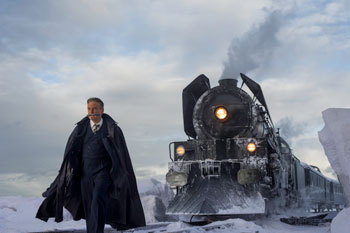 Mathew Prichard, adds: "It's a mixture of all sorts of things. The glamour, the originality of the story and the outrageousness of the solution. It was a brilliantly written book in the 1930's and I think it's hard to remember nowadays, how original it must have seemed then. My grandmother traveled in that direction, and she stopped off in Istanbul on her way to Syria and Iraq, so for Christie lovers, it has a sense of genuine authenticity of where she used to go herself."
Mathew Prichard, adds: "It's a mixture of all sorts of things. The glamour, the originality of the story and the outrageousness of the solution. It was a brilliantly written book in the 1930's and I think it's hard to remember nowadays, how original it must have seemed then. My grandmother traveled in that direction, and she stopped off in Istanbul on her way to Syria and Iraq, so for Christie lovers, it has a sense of genuine authenticity of where she used to go herself."
For Michael Green, it was the first time in his career where he would develop a script with someone who is both the director and the lead actor. "Together, we would be thinking not only of how it would be shot, but how he would want to play individual moments. We could look at a line and discuss the tone and the camera angles, but also, I could hear him read it directly to me and I would be able to shape the lines instantly for him. It was a very interesting and efficient process and takes out a lot of the guesswork when the director is the one who knows precisely how the lead actor is going to be speaking the words."
Kenneth Branagh explains why it was a natural fit for him to direct and play Poirot: "It felt that there was a way in which those two things were very congruent with one person doing the same job. Because, crucially, I think, Hercule Poirot is a director. He directs the characters, and like a director, Poirot intuitively tries to listen to the way in which he can be specific and bespoke about how to create the mood that's required for each interrogation."
As a director, the concentration that Kenneth Branagh would have on all of these amazing actors, and the detail of performance was exactly what Poirot had to have, as he looked for the tell-tale signs of the culprit, which, as Christie points out, is often 'Poirot observing just the flicker in an eye."
'Poirot's a master of observing body language," said Kenneth Branagh. 'It's not someone with an object. It's what somebody does with an object. It's the way they eat, or what they leave, or what they don't say, or what constitutes humor. And from his own alleged separate perspective, he often uses this notion that because he's a Belgian, he's separate, and he plays up to a sense that other people have of him as being different, some might say, eccentric, because when they're saying that, they're underestimating him."
Oscar-nominated actor Johnny Depp was intrigued by how the story felt relevant and fresh. 'It's got everything you might expect from Agatha Christie," said Johnny Depp. 'Death, murder, interesting characters, an unusual, often glamorous situation - all of those elements, inside a wonderful location and journey, are all there. But I was really impressed to return to it and see how it hadn't dated, and, in fact, it had reinvented itself, I think, which is a sign of very good storytelling."
Oscar-nominated actor Willem Dafoe was drawn to the script for its character-driven narrative: "For this story, it's the tone that's so important, and the role of Poirot is interesting and beautifully written, as are the balance of the characters. It has a nice edge and it's fun, but it also has a moral dilemma at its center."
"All of the major plot points are there," says Leslie Odom, Jr., 'but it's really told for a modern audience who has seen everything and heard everything. How do you excite these kids? How do you make them lean forward in their seats when they've seen so much? I think Kenneth Branagh and Michael Green have done a really great job with that aspect of the script."
The style, grace and romance of Green's script and the writer's ability to stay faithful to the essence of the story, while updating it for a modern audience, enticed the acclaimed cast. Explains Manuel Garcia-Rulfo: "It has the same DNA as the novel, but it's more dynamic." Lucy Boynton concurs: "It was a perfect balance between a modern version of it, whilst also staying true to all that is sacred in Agatha Christie's story. That was a really exciting element, to see the way that it had been developed."
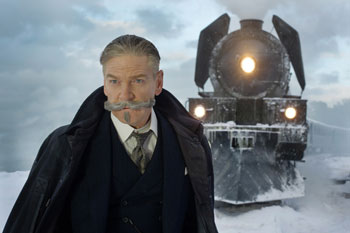 When Josh Gad first read the script, he immediately knew he wanted to be involved in the project. He explains: "I got about twenty pages into the script and called my agent and I said, 'I don't care if I have to play an usher who's taking tickets, I need to be a part of this film, it's extraordinary.' To me, something this smart, something this epic, something that almost harks back to the golden age of Hollywood cinema, as an actor but also as a cinephile, was really exciting."
When Josh Gad first read the script, he immediately knew he wanted to be involved in the project. He explains: "I got about twenty pages into the script and called my agent and I said, 'I don't care if I have to play an usher who's taking tickets, I need to be a part of this film, it's extraordinary.' To me, something this smart, something this epic, something that almost harks back to the golden age of Hollywood cinema, as an actor but also as a cinephile, was really exciting."
The other big draw was the opportunity to work with the esteemed Kenneth Branagh. 'What's so great about Ken is he comes to it with the perspective of being one of us," said Gad. 'He's an actor, first and foremost, and so he understands the questions we ask ourselves, the insecurities we may have, and he is able to speak to those questions with the authority of somebody who has been in our shoes."
Dafoe sees many similarities between Kenneth Branagh's work as a director and his role as Poirot. He explains: "The role of the director is paralleled by the role that Ken is playing in the story, because as the director he's the circus master who sets the scene and tells everybody what they need to know going forward in the story. A similar thing happens in the story itself, as Poirot really takes hold of the situation and directs the events."
A longtime collaborator with Kenneth Branagh, Derek Jacobi, thinks what makes Kenneth Branagh a very good director is that he's an actor first. 'The number of balls he keeps in the air is just mind blowing, but I've always admired his ability to perform and then cut himself off and look at himself objectively... I find that extraordinary, says Derek Jacobi." 'It's quite amazing to see what he does because his eye and his mind are everywhere at once."
Oscar-winning actress Penélope Cruz was also impressed with Kenneth Branagh's ability to seamlessly move between directing and playing Poirot. "What he's doing with the performances and the camera is really powerful and I feel like he's making a film that will get into our brains in a way that is going to trap us, like some strange magic," said Penelope Cruz." "It's like this amazing dance that seems so easy for him, which is very rare and all of us are shocked and blown away by how he can be so present. We are such a big cast and he has so much responsibility."
Adds Tom Bateman: "Ken Branagh is an incredible company leader, he's a wonderful director, but as an actor, it feels to me is where his energy is and his blood is. He wants to be there and you can feel it when you're acting in a scene with him. He gets so excited to be there which is very comforting, and you almost don't see him directing because he does it so effortlessly."
The Detective (Hercule Poirot – Kenneth Branagh)
The beloved fictional detective, Hercule Poirot, is one of Agatha Christie's most famous characters, appearing in 33 novels and over 50 short stories, Poirot was key to ensuring the film worked. Agatha Christie Ltd Chairman James Prichard explains: "I first read the script quite a long time ago, and what's interesting is that things have changed, but the overall tone and flavor of the script have not. From the start, screenwriter Michael Green got that right, particularly Poirot, he really understands Poirot and it's very clear that he does in the script. There are changes and differences, particularly in his look, from what one might have seen before, but the essence of Poirot is there and that to me is incredibly important."
Kenneth Branagh's preparations to play Poirot were extensive and included reading all of the Poirot novels. He began a year ahead of the shoot with a birthday present of a paperback First Edition - The Mysterious Affair at Styles.
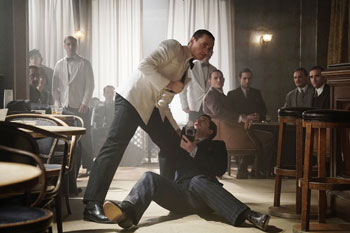 Fittings for his bespoke suits started nine months ahead of shooting. The most time-consuming element was the exact thickness and angle of the knot in his tie, and its perfect reproduction every time he wore it. This required three months of experiment with fabrics, starch and a good deal of patience. He was also measured and fitted for handmade shoes, wearing them in over a period of three months.
Fittings for his bespoke suits started nine months ahead of shooting. The most time-consuming element was the exact thickness and angle of the knot in his tie, and its perfect reproduction every time he wore it. This required three months of experiment with fabrics, starch and a good deal of patience. He was also measured and fitted for handmade shoes, wearing them in over a period of three months.
The actor also gathered all written descriptions of Poirot's moustaches by Agatha Christie, using the extensive resources of the Agatha Christie Estate. After which began the nine-month process of research and development for the requisite face furniture that would live up to what Miss Christie described as "the most magnificent moustaches in all England".
Kenneth Branagh even revisited the work of famous Belgians including the surrealist Magritte, and Hergé, the author of TinTin. He listened to recordings of 27 different Belgian accents by gentlemen of Poirot's age speaking in English, and met with a dialect coach three times a week to study and practice Poirot's accent. These included the occasional Skype sessions in his Garrick Theatre dressing room during his performance as Leontes in Shakespeare's The Winter's Tale.
With Kenneth Branagh committed to play Poirot, he and Green discussed how to accurately hone the multifaceted character. As Michael Green explains: "We wanted to work out how to make him quirky and strange and odd and loveable in all those ways that he is, that make him so memorable and beloved. But also, how to make him feel like somebody who could really exist in this world." He continues: "We wanted to make it thrilling, and to feel genuine unease and tension. Poirot can be seen as a comedic character, but in very serious circumstances, and part of our approach was to show that contrast. Poirot is used to being ahead of the game, in control of the situation, and in this story, he meets a case that is beyond his understanding at that time."
Green's affection for Poirot is evident in the script and he explains why: "What I always love about him is that he's very smart, very funny and very peculiar. If you can weave all those things into his investigation then you have wonderful scenes, as you can make his particularity and peculiarity be what turns his interview with a suspect, so that he can find the piece of information that he needs. He's also an incredibly fun man to frustrate, because he is so perfect and particular, that when he is off balance, he becomes incredibly interesting. That's what ignites him and sets him off."
Hercule Poirot has been described by Agatha Christie in a variety of ways throughout her work. As Kenneth Branagh observes: "She had fun evolving him and not being too strict about rules she may have set. Occasionally, I think she was frustrated by him in that he was her most popular creation, but I think she learned to love him again and again and again. His distinguishing feature is his kindness, and it's often repeated how kind he is. He is also very fastidious, both about his personal appearance, but particularly about his immense and magnificent moustache. A touching piece of vanity that Christie often reports on, and that Poirot acknowledges. She also is quite wry about suspecting that his hair color may not be entirely natural, and may have been helped out by various unguents. His sharpness of mind and his clear brilliance as a detective is something that she makes no bones about. His ability to see detail, and particularly, to see human psychology in depth, and with nuance, I think she enjoyed. She clearly had that as an individual herself. She makes a lot of snap judgments about people, in her life, in her letters. She herself travelled widely, and she was a very independent-minded person, and very, very observant. So, she gives all of those qualities to Poirot."
The design of Poirot's moustache was a key component in finding the character. Branagh says: "It took many months to design the moustache - Carol Hemming [Hair and Make-Up Designer] was behind it, and she came up with a brilliant reference. We began with this line of Agatha Christie's where she referred to Poirot as having the most magnificent moustaches in England. So "moustaches" was a clue. We know she meant it in the old sense, but Carol Hemming's idea was that there should almost be this double-moustache effect. It had to be, because Agatha Christie kept using the words "majestic, immense". It was almost like a mask. It was Poirot's superpower. It kept people at a distance. It needed to be in itself, structurally and luxuriously pleasing in appearance, and it needed to make a big impression. It had to, because the story and the characters' reactions to him in the story and many other stories needed that."
Following the initial design stage, they started testing the moustache on Kenneth Branagh. It was a challenging test per Kenneth Branagh's recollection: 'We kept asking does the mustache do what it needs for the character, every single time? And in a murder mystery with a man like this, the moustache is doing quite a lot of thinking for you, quite a lot of the time. So, we knew it was a tremendously important subject."
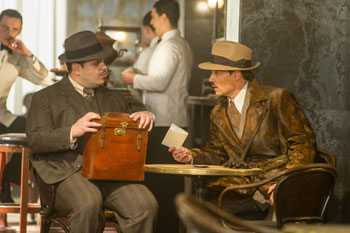 The man must suit the clothes, and the clothes must suit the man. On his costume, Kenneth Branagh comments: "Poirot would not be a dandy in the sense of extraordinary colors, or a massive number of clothes or a constant change of outfits, but he would be extremely precise, and we knew that the tailoring of all of the suits (there aren't so many, because he's travelling) would be precise and crisp, and that was a constant process of readjustment. We spent a lot of time thinking about what he would do with his hands - would he use waistcoat pockets, how much would he use the cane, what height would the cane be. Everywhere there was something that you might expect from the period, like a watch, and a watch chain, it was made very specifically, and everything had a Poirot-ish specificity. The same went for the way he tied his ties, the degree of the knot, just like the moustache, he would be insistent on where they sat, and for it to be the same every single day."
The man must suit the clothes, and the clothes must suit the man. On his costume, Kenneth Branagh comments: "Poirot would not be a dandy in the sense of extraordinary colors, or a massive number of clothes or a constant change of outfits, but he would be extremely precise, and we knew that the tailoring of all of the suits (there aren't so many, because he's travelling) would be precise and crisp, and that was a constant process of readjustment. We spent a lot of time thinking about what he would do with his hands - would he use waistcoat pockets, how much would he use the cane, what height would the cane be. Everywhere there was something that you might expect from the period, like a watch, and a watch chain, it was made very specifically, and everything had a Poirot-ish specificity. The same went for the way he tied his ties, the degree of the knot, just like the moustache, he would be insistent on where they sat, and for it to be the same every single day."
Much like the character is fascinated by alignment and perfection of symmetry, the creation of Poirot became like a classic timepiece: distinct, clean and with the utmost precision. "We were looking for an immensely precise, cultivated, crisp, clear, clean look, and finding in those cuts, and in those colors, a timeless kind of elegance," offers Kenneth Branagh.
Costume Designer Alexandra Byrne's impeccable eye for this precise look dramatically enhanced Poirot's presence on screen. "The first discussion was about the moustache, so that started with Ken and Carol Hemming and helps to define the character," says Byrne. 'Then I joined in, with Ken being very keen that Poirot had a military background. We did a lot of research on what that meant, to be a Belgian with a specific military background. We worked towards his vanity being a 'vanity of precision" rather than a peacock vanity" we felt that Poirot would have developed a style of suit that worked only for him. He's not interested in fashion - he has his style, he has his tailor, and that's who he goes to. He has two suits and an evening suit, which is about right for a man of his class. They're beautiful, they're honed down to the precision of what he feels is right, and there's this absolute symmetry and tidiness, so that when he's in a fight and his collar gets disarranged or a button comes off, that is deeply distressing and unacceptable to him."
In bringing Kenneth Branagh 's version of Poirot up to date, there was room to make him more nimble than previous incarnations. Equally cerebral. But with a touch more brawn and agility. Enter Stunt Coordinator, James O'Donnell: 'I spent some time thinking about how we could get Poirot involved in the action without making it stand out too much with an audience," recalls James O'Donnell. Having spoken to Ken, I wanted Poirot to be an Aikido master with a cane, which was someone who was masterful, not only with the way he analyzed and interpreted crime, but even in the way he fought. He wouldn't go fist to fist, he would be clever, like David vs Goliath, which fitted in well with the character."
The Gangster ('Edward Ratchett" – Johnny Depp)
While many of the characters in the film are grappling with the lines between good and evil, Ratchett is seemingly the one inherently evil character on the train. "Ratchett is a gangster, a small-time gangster, it seems, who is on the train with his secretary and his butler," says Kenneth Branagh. 'He has money, but he does not have peace of mind."
Ratchett is disturbed and unsettled, as someone is after him, and he becomes aware of it through a series of provocative notes, threatening messages that are found on the train. He seeks Poirot's help, and it is not an easy conversation between him and Poirot. In turn, audiences can see Ratchett is not going to have an easy journey on the Orient Express.
'From the second Ratchett enters the story, you can sense his paranoia and his urgency to befriend Poirot and protect himself," says Johnny Depp. 'The elegance of the train, the gangster swagger of Ratchett combined with his greasy confidence culminate into an extremely compelling and amusing character to play."
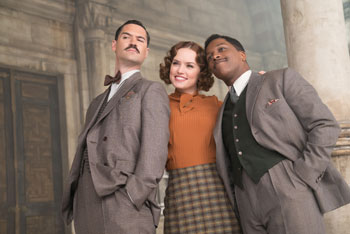 Kenneth Branagh describes Johnny Depp as bringing: "A wonderful, seedy glamour to this very sharp-minded, clearly dangerous, and clever mobster. Johnny's performance is dark, it's dangerous, and it is very funny." 'In many ways, he's the antithesis to Poirot, which makes their exchanges so tense," says Johnny Depp. 'Ratchett wants the respect of Poirot, but he's never going to get it."
Kenneth Branagh describes Johnny Depp as bringing: "A wonderful, seedy glamour to this very sharp-minded, clearly dangerous, and clever mobster. Johnny's performance is dark, it's dangerous, and it is very funny." 'In many ways, he's the antithesis to Poirot, which makes their exchanges so tense," says Johnny Depp. 'Ratchett wants the respect of Poirot, but he's never going to get it."
Ratchett
You're the world-famous Hercule Poirot. Avenger of the innocent. Isn't that what they call you in the papers?
Poirot
And you are an innocent?
Ratchett (laughs)
You're fun.
'Johnny Depp oozes charisma and charm and confidence and is the loveliest, sweetest and most fun co-star you could imagine," offers Josh Gad. 'And then he can turn on this character like Ratchett, who's the complete opposite in every way, and it's incredible to watch. It's become an expectation now, that every time Johnny creates a new character, you're so excited to see what that's going to look like. Each one has so many layers, physically and vocally" he's able to identify it so specifically."
The Assistant ('Hector MacQueen" - Josh Gad)
Hector MacQueen is Ratchett's secretary and a very nervous individual. He is well-traveled and scholarly, trained as a lawyer, and fluent in many languages, but is not a happy man, and prone to excess. 'He seems to drink and smoke a little more than is good for him, and he seems unsettled," says Kenneth Branagh.
The role was a departure for Gad who understood the dynamic between MacQueen and Ratchett. "MacQueen is a complicated guy," says Gad. 'He's got a story which seems fairly obvious, but then there's what's going on behind all that. He is sort of a slave to Ratchett. He is a trembling, insecure secretary to this rather abusive boss who expects a lot of him, and demands even more."
'Josh Gad has a fantastic naturalism in the part. We know how funny Josh Gad can be, and of course he's very musical as well," says Kenneth Branagh. 'Here, he plays something with great simplicity and vulnerability. McQueen is someone who feels, in some way, as though some damage or some wounds have occurred in his life, that, Josh, in the performance, seems to wear very lightly. It makes him very intriguing, and it makes the little trio of Ratchett, Masterman, and McQueen a very tight-knit but also conflicted group. They are an electrifying trio."
In talking through the character with Branagh, Gad explains how much back story was necessary to truly embody MacQueen. "We went into great detail about who this guy is, what his upbringing was - where does he come from? How has he gotten to this place? The beauty of this film is that you think you know what you know, but you don't know anything. And MacQueen is just one piece of the puzzle."
The Butler ('Edward Masterman" - Derek Jacobi)
Masterman is Ratchett's trusted butler. He appears to be entirely obedient and subservient - very English, and very polite. But, in the hands of Derek Jacobi, he's played more as an officer from the military with a cockney swagger and a no-nonsense demeanor.
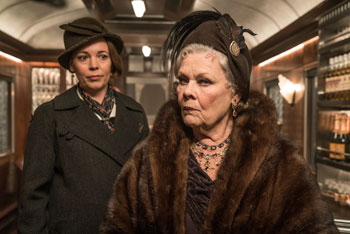 'We understand that Masterman can be very kind and very solicitous," says Kenneth Branagh. 'And he is very strict about performing his duty, but we also know him to be something of a tough guy himself. He is a man with a beautiful question mark over him."
'We understand that Masterman can be very kind and very solicitous," says Kenneth Branagh. 'And he is very strict about performing his duty, but we also know him to be something of a tough guy himself. He is a man with a beautiful question mark over him."
Jacobi and Kenneth Branagh have collaborated many times on theatrical and film productions. When he was asked to play Masterman, Jacobi accepted without hesitation. 'He's an interesting character," says Jacobi, 'he was a batman during the war, and then a valet, and now he's a valet to a rather unsavory character in Ratchett. Masterman is a bit uptight, but he's also very ill, probably dying, and also has a degree of revenge somewhere in his psyche."
'Derek has the ability to play and suggest many layers of dimension in that kind of person," observes Kenneth Branagh. 'Derek's an East Ender himself, so it was nice for him to play an English butler, not as a sort of constipated character, but more of a sleeves-rolled-up kind of individual, who could take care of himself and his master, if he needed to."
At Branagh's behest, Jacobi played the role with an East London accent. 'I quite enjoyed it," says Jacobi, 'as I think I'm sometimes considered a bit posh as an actor, you know: classical and Shakespearean, so it's very nice to come down to earth occasionally!"
The Widow (Caroline Hubbard - Michelle Pfeiffer)
Michelle Pfeiffer dazzles as Caroline Hubbard" a kind of character that Agatha Christie met numerously on her own travels, and is often quite ruthless about describing.
"Hubbard is a husband-hunter," offers Michelle Pfeiffer. 'Or so she says. In some ways she's a lonely, and rather sweet, and tender, and often funny woman, but she can be very forceful, and to some people a little irritating and a little intense. It was fun to step into her shoes."
"Michelle Pfeiffer charts the sort of inner loneliness that Agatha Christie knew well," says Kenneth Branagh. 'The challenges of being a woman alone, and travelling in difficult circumstances. Once on the Orient Express, with all of its glamour, in the golden age of travel, it was different. But to travel in the Middle East at that time was a challenging thing. And so, the intrepidness, the pioneer that is Christie is in Caroline Hubbard. And with Michelle Pfeiffer, who is also a tremendous comedienne, there is also a wonderful sense of fun."
'What you look for in a role is range," says Michelle Pfeiffer. 'Where there's humor and levity and then, where does it turn? You want to build to those moments. And that was one of driving forces for me coming aboard. And the period… the costuming was magical, and so elegant. There is such an appreciation for style and glamour and you really walk away with a sense of that after seeing this film." Costume Designer Alexandra Byrne described dressing Hubbard as: "The most fun, and the most challenging, because she's described as a woman who we hear coming before she enters the room, and she's too big for the space. That's quite difficult to pull off on film because it's about creating a character with a lot of contradictions that don't all add up in the same direction. She's got to be credible - extraordinary, but credible. When we first meet her, we've got to believe in her and we've got to like her and be invested in her."
The Missionary (Pilar Estravados - Penélope Cruz)
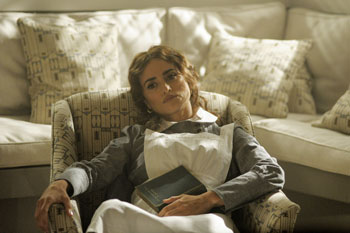 Pilar Estravados is the name of a character who appears in another Poirot story, Hercule Poirot's Christmas. However it is just her name, and not her character traits that have been 'borrowed"! 'In our delightful and delicious attempts to surprise people with the plot, and following consultation with Agatha Christie Limited who are the guardians of her work, we allowed the character of Greta Olson to make an exit, and the character of Pilar Estravados to make an entrance," said Kenneth Branagh. Penélope Cruz plays the impassioned, intense missionary with a zeal to travel the world and do what she can to improve an imperfect world - both spiritually and philosophically. There is both a dedication and a mystery about her:
Pilar Estravados is the name of a character who appears in another Poirot story, Hercule Poirot's Christmas. However it is just her name, and not her character traits that have been 'borrowed"! 'In our delightful and delicious attempts to surprise people with the plot, and following consultation with Agatha Christie Limited who are the guardians of her work, we allowed the character of Greta Olson to make an exit, and the character of Pilar Estravados to make an entrance," said Kenneth Branagh. Penélope Cruz plays the impassioned, intense missionary with a zeal to travel the world and do what she can to improve an imperfect world - both spiritually and philosophically. There is both a dedication and a mystery about her:
"At the beginning of the story we don't know much about Pilar," acknowledges Penelope Cruz. 'Just that she seems very religious, because she walks around with her bible and her cross, and she loves talking to people about God and about the reasons why this is so important in her life. But she only shares some of her reasons. She has a scar, and skin that has been damaged from who knows what. The scar represents her biggest trauma, and has made her become a different person. When the trauma happened, she changed her lifestyle in many ways. She's a very damaged person, and she's finding relief and a reason to live by helping other people and becoming a missionary."
Often cited as one of the most beautiful women in the world, in this film, Cruz plays a character who seems bent on hiding her beauty. The look and feel of her character is austere and solemn.
Costume Designer Alexandra Byrne was able to demonstrate Pilar's character through her costume, as she explains: "She is a woman who wants to deny any femininity, so her clothes have to have a practicality about them. I pulled pieces from a costume house in Canada where they had these amazing robust travelling culottes, and it seemed perfect, as for a woman in the 1930's to wear trousers was actually quite a fashion statement, but these culottes seemed like a perfect balance of practicality and a non-sexual item of clothing."
The Professor (Gerhard Hardman - Willem Dafoe)
The arrogant Professor Gerhard Hardman annoys his fellow travelers almost immediately. His political views, as they are revealed, seem odious to the passengers, but he is impervious to their feelings. Instead, Gerhard is very particular about where he sleeps, what he eats, what he does.
'Gerhard has a favorite subject to talk about, which is himself," jokes Kenneth Branagh. 'He's a provocateur and a dangerous individual, because he's a catalyst to make other people argue, and sometimes bring them into conflict."
To play this complicated character, Kenneth Branagh turned to Oscar-nominated actor, Willem Dafoe. 'Willem has a knack for making unlikeable people likeable," says Kenneth Branagh. 'He's unafraid to get caught in the trap. There is a joy in watching him squirm out of situations, once he is caught."
"When we meet Hardman, he's an Austrian Engineering professor who is on his way to Turin to give a speech on the military uses of Bakelite," said Willem Dafoe. 'He's a man that expresses opinions that are often offensive to some of the other passengers, because he's very aware of place and hierarchy and race. Given that it's 1934, in Europe, he's quite buttoned-down, quite a serious guy, and someone to watch." Poirot seems to catch on that there's a game that Hardman is playing, but the question is, why is he playing it? One of the earliest suspects, Poirot seems to track every syllable of Hardman's bluster. "A key point in the story is that the characters are not who they appear to be, and Hardman is no exception," said Willem Dafoe.
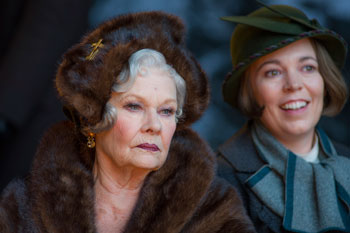 The Countess (Countess Andrenyi - Lucy Boynton)
The Countess (Countess Andrenyi - Lucy Boynton)
The Countess Andrenyi is married to the Count Andrenyi, and they are both ballet dancers. He is Hungarian, and her background is not exactly clear. What is clear, is that she is subject to some kind of addiction or disturbance that keeps her out of sight of the travelers on board the Orient Express. She makes few appearances, and when she does, they are dramatic and telling.
'Lucy, who is a very beautiful and talented actress, really found a way to inhabit this character's loneliness and isolation, and intrigued us as to what the reason for that was," says Kenneth Branagh. 'We see her early on, and we are keen to know more about her, and then we're denied that access, by the story, and by Agatha Christie, only heightening our desire to know more. It intensifies the shock when we do see her. And Lucy manages to, even inside a very, very dark part of the story, have a kind of a playfulness with the character, and particularly with Poirot, whom she finds absolutely ridiculous." "The Count and Countess are both illustrious ballet dancers, although in the last few years the Countess has taken to consuming copious amounts of barbitols, so she's a slightly woozy ballet dancer," jokes Boynton. 'She has a beautiful relationship with her husband, who is played by Sergei Polunin."
Boynton continues, "You can tell that their relationship is very passionate and that they're very much in love, and rely on each other a lot. Since she has delved into this slightly sleepy state of drug addiction, she has become very dependent on him, and he handles her so gently. It's sad to see her withdrawing from herself and her world, but there is constant love and reliance that shines through."
Boynton was keen to immerse herself in preparation for the role: "I started taking ballet lessons, because they're both ballet dancers - although you don't see her dance because she's very woozy and unstable by the time we meet her. I just wanted that foundation in posture and gait, and so I could stand next to Sergei without feeling terribly embarrassed. It was really informative and helped bring her to life and to build her character."
Boynton's costumes for the Countess were made up of beautiful vintage fabrics, although it isn't always clear what type of garment she is wearing and why:
'Because the Countess is also nocturnal, as a result of her drug taking, the outfits that she is dressed in are both day and night - so you can't quite work out whether she's in pajamas or a gorgeous satin two piece," said Boynton. 'It's been a lot of fun putting it all together, and a total dream to wear."
The Count ('Count Andrenyi" - Sergei Polunin)
The Count Andrenyi is a renowned dancer, and Branagh contends 'we were very fortunate" to have cast Sergei Polunin, who is a 'magnificent" dancer. Polunin's capacity for movement of a certain kind, especially through a violence that we see expressed in this character, makes him very distinct.
"Andrenyi is very protective of his wife and he feels every step she takes," says Polunin. 'They are on the verge of splitting up because she has a problem that he must resolve - he just wants things to get better for her. She is a source of light in his life and he doesn't want her to go into the darkness." 'You really get a sense of the performer that he is," says Branagh. 'There is a grace and a danger and a deftness about the way that he moves that is very electrifying, very unsettling."
With his background as a ballet dancer, the role of Andrenyi marked Polunin's first foray into acting. Polunin enjoyed finding his character with director Branagh and his co-star Lucy Boynton. Polunin explains: "Kenneth is really precise with what he wants and asks interesting questions to achieve this, such as -What did Andrenyi dream?' -What was his past?' -What are his feelings towards his wife?' It was really interesting for me to develop the character in such a way and it gave us artistic freedom."
"Sergei brings a fine acting talent, and a really memorable physical presence to the role, along with an intrigue, and a dark and deeply romantic quality," offers Branagh. 'He has this Slavic kind of soulfulness that makes you feel strongly that were you to go anywhere near his woman, there would be trouble afoot. And trouble is afoot because Poirot investigates them."
Adds Lucy Boynton: "I would never have guessed that this was Sergei's first acting job, because he's so beautifully composed, has such great self-possession and all the discipline that comes with being a dancer. He's a brilliant partner to bounce off and play with."
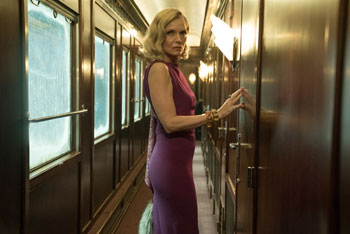 The Princess (Princess Natalia Dragomiroff - Judi Dench)
The Princess (Princess Natalia Dragomiroff - Judi Dench)
When we meet Princess Dragomiroff, we are introduced to Russian royalty who seems to have a hard time coming on to the Calais coach, because it is somehow feels beneath her standards. In such a role, we find legendary actress, Judi Dench.
'I think Judi Dench had a whale of a time playing Dragomiroff's imperious, contemptuous, superior arrogance and disgust at most of what went on around her, which was never as she liked it," offers Kenneth Branagh. 'Never quick enough. Never soon enough. Never hot enough. Never nice enough. And when she wasn't complaining about what wasn't right, she was demanding that her dogs be looked after. It allows for a chance to see a character who is very stern, and very forbidding, to also be naughty and funny. Judi Dench is somebody who can play all of those things with great delight. At the same time as formidable as she is funny, she can also be very secret and hidden."
Costume Designer Alexandra Byrne was honored to create costumes for Judi Dench. "The great thing about Judi Dench is that she has these amazing twinkly eyes, and playing a Princess, she would have a lot of jewelry, that she had managed to get out of Russia during the revolution and had maybe repurposed," says Byrne. 'I took quite a simple line on her clothes so that the jewelry and her eyes could really sparkle."
The Maid (Hildegarde Schmidt - Olivia Colman)
One of the many personal dynamics at play in the film is the servant/master relationship. We see it with Ratchett and MacQueen, and as well with Princess Dragomiroff and her maid, Hildegarde. Agatha Christie, and in turn Poirot, is constantly exploring the complexities of these relationships.
Hildegarde Schmidt works for the Princess Dragomiroff as her lady's maid. She cooks for her, manages her wardrobe, and her sharp personality, which is constantly to complain, it would seem. She has a thick skin, so thick, as Branagh describes 'so as to not be broken and squashed by what would probably traduce most other people."
Hildegarde is polite and clearly intelligent, but she's quiet. She's discreet to the point of making you wonder whether she has a lot to hide. Poirot wonders, 'Does she know something we don't?" 'Hildegard has a sort of secret and hidden strength, or, dare I say it, does she have something over the princess?" says Branagh.
To bring the role to life, Branagh turned to acclaimed actress, Olivia Colman. 'Still waters run deep," notes Branagh. 'And with Olivia Colman, of course, just in repose, you see this woman listening, and you are intrigued and compelled."
The Governess (Mary Debenham - Daisy Ridley)
Daisy Ridley joins the illustrious ensemble as Mary Debenham, a governess with a penchant for photography.
"Agatha Christie seems to me a very modern woman," says Branagh. 'Everything about her own biography is trailblazing really, and Daisy is a very sharp, intelligent, funny, engaged, interested and curious person. I feel that appetite for interest in other people and things is something she really had. Daisy brings that to it, and bring that energy to Mary Debenham, creating a very forward looking and thinking, and rather new and daring individual."
Adds Daisy Ridley: "When we first meet Mary she is a free-spirited young woman, who is travelling, seemingly alone, a governess, and she likes taking pictures. She has a wonderful exchange with Poirot at the beginning of the film and it sets off a really nice dynamic between them, that drives through to the end."
"I think the character of Mary Debenham is maybe closest to a version of Agatha Christie," suggests Branagh. 'She's about the age that Agatha Christie was when she did one of her world tours, with her first husband - the tour on which she learnt to surf in Hawaii - the first English woman to do so, I'm led to believe. It gave her the sort of pluckiness and the intrepid pioneering spirit that she imbues Mary Debenham with. And Daisy Ridley brought a terrific modernity."
The Doctor (Dr. Arbuthnot - Leslie Odom, Jr.)
On an ordinary journey, Leslie Odom, Jr.'s turn as Dr. Arbuthnot would be a kind of stalwart or an anchor on the train, as doctors often are. In difficult situations, they are brought in to be the professional voice of reason, and a compassionate and counselling voice. But this journey is far from ordinary.
"Arbuthnot is a former soldier, and he's a doctor," said Odom, Jr. 'We worked really hard to be as specific about that as we could, about who this black man might have been in order to achieve what he'd achieved, what he would have had to go through to get to where he was and what the circumstances of his life might have been in order to have a last name like Arbuthnot."
'Leslie Odom, Jr. has this wonderful intimacy and warmth and compassion and plays the character with great tenderness and sensitivity, bringing to Dr. Arbuthnot both what you might expect from a doctor, but, also more of the soul of a romantic," offers Branagh. 'That romantic disposition is something that may be at work, and in the service of one of the other characters on the train, and to that extent, he has to hide it. His ethnicity at that time is something that the story explores, and Arbuthnot has to display the courage to be different in a difficult situation, and defend himself, both literally, and philosophically. He becomes a fascinatingly complex character, who is pivotal to the action."
The rich backstory offered Odom, Jr. the opportunity to collaborate on his character's past with Branagh, Hair and Make-up Designer Carol Hemming and Costume Designer Alexandra Byrne. 'Alexandra was great in her research in finding pictures and information that we could glean from a bunch of people's lives to make Arbuthnot's life as specific and rich as we possibly could," says Odom, Jr. "He's an ex-military man," adds Byrne, 'with English tailoring, but a man who's not had a lot of money at his disposal, and I think being black and being a doctor he would be very correct, and wouldn't want to break any rules or step out of line. The most important thing about the English style of dressing of the period was that you did not overstep your class."
The Manager (Bouc – Tom Bateman)
Tom Bateman had worked with The Kenneth Branagh Theatre Company at the Garrick season, where he performed in The Winter's Tale and Harlequinade and was honored to have the chance to play Bouc, who has been reinterpreted from his original incarnation in Christie's novel, as Bateman explains: "In the book, he is a contemporary of Poirot's. He's supposed to be the same age, French, and they are these two older men talking and laughing about the world. We've flipped that and given it an interesting dynamic where an older Belgian man and a younger Englishman have this sweet fondness for each other. In my mind, they have a common view of the world - they both see the good and bad in things - and they match each other in that way."
Branagh also acknowledges the friendship between Poirot and Bouc: "Monsieur Bouc is the director of business on the Orient Express, and when we meet him, he's very much not involved with business. He's involved in leisure, with a young lady who he's spending brief but quality time with in the kitchen of the Kiraz Restaurant, just before they board the Orient Express. However, he is thrilled to find his old friend Poirot, an unlikely pal, but the two of them seem to respect each other. Poirot has great, great affection for him. Bouc is the life and soul of the party. During the course of the film, his innocence is taken away, by suddenly becoming responsible for a train where a terribly violent crime has occurred, and which is stuck in the mountains. It's a crisis for him, he may lose his job, and if this murderer stays on the loose, he may lose his life."
'Bouc is a bon vivant, a lover of life and has a wonderful job," observes Bateman. 'He has no qualifications, but he can charm people and make them feel comfortable and excited, until the murder happens on the train and then suddenly we see a different side to him."
From the lightness and frivolity of the opening scenes of passengers boarding the Orient Express to the graveness of the murder, Bouc goes through a character arc that is heavily influenced by Poirot. He begins to care about things that he perhaps wouldn't have seemed likely to care about at the beginning of the story.
"Tom Bateman's performance has a wonderful, easy, light, debonair charm, and then a gravitas that is born out of having to face a very dark situation, and see it for what it's worth," says Branagh. 'It's a lovely performance, and the scenes we share are very natural and instinctive."
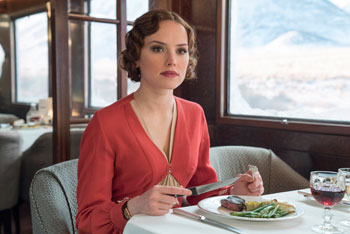 The Train Conductor (Pierre Michel - Marwan Kenzari)
The Train Conductor (Pierre Michel - Marwan Kenzari)
Pierre Michel of Avignon is the train conductor, and unwittingly, thrown into the role of a suspect, even though he feels fooled at having been on duty all of the night in which the murder could have taken place, and in which he should surely have seen it.
"Pierre Michel carries heartbreak and pain, as his mother, and not long before, his sister, have passed away. He is a character with a great sort of sadness, trying to do a job under pressure," says Dutch actor, Marwan Kenzari.
'Marwan brought that sort of tenderness to bear, and could be sensitive without feeling weak," said Branagh. 'He also gave the impression of having great pride in his job as a conductor of the Orient Express, and therefore, tremendous professional shock and horror at being potentially accused of being involved in a crime."
Adds Kenzari: "Pierre Michel is the conductor on the train who takes care of the first-class customers on the Calais coach, where much of the film takes place. He has been part of the company for quite a while and takes his job seriously. In my imagination, I would see him spend most of his time at work. He's an important piece of this chain of extraordinary events, because he has access to all of the compartments and that makes him a valuable commodity."
The Red Herring (Biniamino Marquez - Manuel Garcia-Rulfo)
Biniamino Marquez played by Manuel Garcia-Rulfo is another new character who helps throw the audience off the scent, especially those who may feel they know this story.
Marquez seems to harbor a secret. He isn't entirely straightforward and that becomes clear early on, quickly making him a target of Poirot's watchful eye.
'We've had a chance to tickle a few things, to just do what Agatha Christie always wanted to do, which was to keep people guessing until the very end," said Branagh. 'And Manuel Garcia-Rulfo is a terrific actor, who has a wonderful warmth and kindness. And he delivers a lovely performance, of keeping the audience, and keeping Poirot, constantly guessing as to whether he's the genuine and compassionate man we think, or whether there may be far more to him than meets the eye."
The Production Design Of Murder On The Orient Express
The billows of smoke from the train's engine. The massive snow drifts ominously approaching the train tracks. The sparkle of the fine silver glistening in the dining car. The fine woods, leather and china that adorn the Calais Coach. The pop and pour of Veuve Clicquot. The single shot of a gun.
These are a few of the indelible images that permeate the exquisite production of Murder on the Orient Express.
For fans of Agatha Christie, this production takes you in to all facets of the infamous train. For newcomers, they can savor every detail of a location which captured the world's attention over 80 years ago.
"The look of the film is great, with brilliant choices as to location, in that it's not all set on the train," says Derek Jacobi. 'There's a lot that takes place off the train."
"Ken wanted to interview each character in a different location, inside the train and outside the train. I think what he wanted was this idea that the train is stuck, it's not going anywhere, and we can play in and around it," said Tom Bateman. 'So we go underneath the train, out the side of the train, running through it and even on top of the train."
For Branagh, the creative team around him is of utmost importance in sustaining the level of detail and accuracy that he looks for. He explains: "The great thing about having worked with a number of people on a number of occasions is that you build up a rapport, a shorthand, and artists like Carol Hemming, Alexandra Byrne, Haris Zambarloukos and Jim Clay, are all interested in storytelling, inside their particular craft."
Production Designer Jim Clay was thrilled at the prospect of working on the film and imbuing it with new life. He explains: "It's a complicated story and essentially a sedentary story, on a stranded train. But I knew that the challenge was to bring it up-to-date and help to heighten the drama as much as possible, breathe some air into that train. So the first conversations we had were about where the train was stranded following the avalanche. It's written as a mountain pass, but we extended that to be on a viaduct. Clearly Poirot in the script was going to be a younger, more agile character, and there were chase sequences, which we incorporated down the viaduct, and this immediately started the creative juices... it's not hard when you get this quality of writing and the knowledge of what this director has done in the past - you know you're off and running."
Leslie Odom, Jr. has worked extensively in theatre and was extremely impressed by the level of detail in the production design of the film. He explains that in the theatre, "It's about the leap that you take, it's about the holes that you fill in. But film, so much of it is really about that attention to detail. When you're dealing with people who you know are caring about every napkin and window pane and all the linen on the table and every piece of china, it feels like time travel every time you step onto set, and it feels like a great deal of the work has already been done for you. You just inhabit the space."
Shooting On 65mm
The level of detail was particularly important as the film was shot on 65mm, a format which heightens every element of the filmmaking process.
"In our digital age, it's increasingly rare for films to be shot on celluloid, and mostly when they are, it's 35mm," said Branagh. 'We are shooting on 65mm. So, in crude terms, it's twice the size of the 35mm negative. It allows for a level of definition in the color and the range of tones and contrasts in the movie that, if you like film, some would argue, echoes more the experience of the human eye when viewing things. It essentially means, in layman's terms, that it looks sharper, richer, more colorful, and it feels like you're inside it. That's what 65mm does for me, and I wanted to take the audience onto the train. That's why we chose that format."
For Executive Producer Matt Jenkins, the challenge of shooting on 65mm was even more far-reaching. He explains: "It's rare these days that people even shoot on 35mm, so, we just took it one step further and found the biggest film format we could. From a production point of view, it was extremely challenging because there's no UK laboratory to process the film, the only laboratory was in Los Angeles, and the studio was very against us – quite rightly – having to ship our negative halfway around the world every night. So, in the end, I opened up a lab in London, through Kodak, which is the first 65mm lab we've had in the UK for probably 30-odd years. This should be of huge benefit to the industry going forward, and it put the studio's mind at ease that we wouldn't be shipping our negative halfway across the world and that our rushes were safe."
Jenkins continues: "What it brings to the movie, we hope, is a real sense of scale and feeling and emotion. I think we may have lost some of that had we gone the digital route. With 65mm you see twice as much, so for the likes of Haris Zambarloukos, Alex Byrne and Jim Clay, they essentially had twice as much work to do, as we're having to light much more than you would normally see, but with that came the chance not to just build sections of Stamboul Station, but build the entire Stamboul Station, because there was the possibility of seeing the entire station with a film format that was so large that we could really fill every single frame and put as much life in as we possibly could."
The film also has some record-breaking statistics, as Jenkins explains: "Haris and Ken dreamt up this sublime Steadicam shot which would be the last shot of the film. I believe it's a world record for the longest Steadicam shot ever on 65mm film. We rehearsed and rehearsed it and spent the whole day trying to get the shot, which we did, on the final take."
Kenneth Branagh describes the shot: "One of the really powerful parts of the film, having produced a very emotional reaction to the discovery of who has performed this violent act, who has died, who really has died, and who is responsible for it, is to then be faced in Poirot's case with a really significant, morally complex decision about what he is to do about it. And, so, the last beat of the movie is an invitation to the audience to ruminate on the same thing. So, we have a shot that begins with Poirot in his carriage, and follows him all of the way down the entire length of the train, meets all of the actors, every single one of them, turns around, allows us to understand what Poirot may or may not do, and then follows him out. As he gets off at Brod Station, and meets a young soldier who tells him that there's another problem and another murder he may have to face, it's at that point that the Orient Express, also in the same shot, leaves. Poirot has to decide whether he's going to get back on or follow another murder, if we believe this one has been satisfactorily accomplished. That involves so many moving parts. All of the actors, all of the crew, hiding, a real train, really arriving, really leaving, and a Steadicam shot that lasted probably five minutes, with a very heavy piece of equipment, finally ending up a hundred feet in the air. I think it works and was a very exciting thing to do, but mostly, because the question mark at the end of the film invites it."
Building The Mountain
The film was primarily shot at Longcross Studios, west of London. A former Ministry of Defense tank testing site, the studio has several stages, a test track and a substantial back lot, which gave Production Designer Jim Clay enormous scope to build his sets.
Explains Executive Producer Matthew Jenkins: "Working with Jim Clay has been a fantastic experience because his vision is second to none. He has had his work cut out on this picture, as not only was 95 per cent of our work in the studio, but also shooting everything on 65mm meant that every minute detail had to be perfect because the camera sees everything, and sees everything wide. So, Jim built a full 360 degree Stamboul Station set, a 360 degree Stamboul Bazaar, two working replica Orient Express trains and a 30-tonne full scale replica locomotive, as well as an enormous viaduct set."
Writer Michael Green was delighted that the scale of the film could be amplified: "In the original novel we have a snowbound train just in and of itself. For the script, we wanted to enhance the ideas of the book, whilst still honoring them - not necessarily change them, but just inhabit them a little more deeply. So, in the novel, the train becomes snowbound. In this film, it becomes a little more thrilling, in that the passengers become snowbound in a fairly precarious place - a creaky, viaduct bridge, which is the last place you'd want to be stuck for any length of time, because at any given moment you're hearing the creaks and groans of ancient wood, plus it completely removes the possibility of escape."
Adds Branagh: "It's exciting that Agatha Christie chooses this confined space in which to trap her characters. But we wanted to expand the range of that train to see that if the train was, via a violent avalanche, trapped on top of a viaduct, which, in itself, was potentially precarious, and where there was great jeopardy inside a stretch of mountain too high for anybody to easily get down by walking. That did a couple of things. It expanded the idea of a different kind of trap, in that you're not only in a trap of the train carriages and then the little rooms themselves, but, also, on this mountainside with a vast amount of precipitous danger around you. It allowed us to get the characters and the camera outside, and to see a sense of the scale of this thing where this deep, dark, intense, tiny tragedy was happening. So, Jim Clay responded brilliantly to the idea of making where the train was trapped, then the landscape around it, as exciting as what was going on inside the train."
Clay built a mountain 35 feet high, with digital extensions that make it appear much higher. A set of this magnitude required the involvement of structural engineers in the design to ensure its safety, given a train would rest and ride on it.
Adds Matthew Jenkins: "Originally, the avalanche hit occurred in a wooded environment, but early on in the process, Jim Clay thought that it would be good for our avalanche to take place on a viaduct. Given that quite a big percentage of our film takes place when the train has been hit by this avalanche – it just made sense to spend a lot of resources and energy in making this viaduct as big and epic as we possibly could. So, Jim designed it and it probably stretched 200 or 300 meters from left to right. On top of that we craned our four train carriages, plus our storage car, our tender, and our locomotive, which must have easily weighed 150 tons. The whole area was then snowed up from left to right and we shot on that set for many weeks and got huge production value out of it."
Agatha Christie Ltd Chairman James Prichard visited the viaduct set and claimed: "When you're up on the viaduct you can actually feel the snow - you feel that it should be colder than it is up there, because it feels so real."
The snow was also a logistical feat as Matthew Jenkins explains: "We had many weeks working in snowy environments – and I'm not just talking about snow ten meters left and right – I mean, this was 100, 200, 300 meters left and right, the entire frame filled with snow, falling snow. Dave Watkins had to put a lot of work into it, as there were all sorts of different types of falling snow, from powder to snow candles to smoke. In addition, when we were on the stages, he had to devise a way of having snow move past the windows without making any noise, so, he built a very complicated ducting system, which filled the stages, to ensure that we could have wind and moving snow passing our carriage windows without anybody hearing that it was going on."
The Stamboul Station set was built on Stage 1 at Longcross Studios.
"When we walked into that huge sound stage and the entire interior of Stamboul Station had been recreated, it was breathtaking," said Lucy Boynton. 'The detail and the craftsmanship that has gone into it all is unbelievable. It's all there in front of you, you're sitting on a perfect train, that actually pulls out of the station."
That the Orient Express pulls out of the Stamboul Station set, is a logistical feat in itself, as Production Designer Jim Clay explains: "Stage 1 is the biggest stage at Longcross and we decided that is where we should build the station."
Production research revealed that Stamboul Station itself is actually much smaller than the team originally thought. The production team filled the stage with huge columns and platforms with two tracks. Because Longcross was originally a factory for building and testing tanks, the stage has two big doors at the end of it, which allowed for the building of the track to full length.
Clay added, 'Indeed it went out of the stage and into the car park and we even had to close part of the studio road. This enabled us to pull the whole of the train carriages out of the station."
Moving To Malta
The majority of the film was shot at Longcross Studios, with the filmmakers travelling to Malta to capture the riveting opening scene.
"The opening of our film is at the Wailing Wall in Jerusalem, and the first problem Poirot has to solve is potentially one involving a religious dispute, or that which may turn out to be such a dispute, in a very vibrant, noisy, crowded place," says Branagh.
In Malta, the production was able to find and build a wailing wall, and its environs. This allowed for this great, big, open, sun-filled, expansive vision that could open a film that eventually was going to go closer and narrower and away from the sun and into the dark and the snow.
For Branagh, it was important that the audience has seen the way Poirot's mind works before he arrives on the Orient Express. 'It's one thing, having seen somebody who is referred to as the world's greatest detective in action, as opposed to merely hearing it being reported," offers Branagh. 'So, we get a chance to deliver big-screen size, yet more exotic locale, and an introduction to a man who travels the world with that extraordinary, detective, deductive mind, and we got to do it in Malta, which has incredible, ancient ruins and locations."
The Orient Express
In this story, the great and glamorous Orient Express leaves from Istanbul, travels up through the Dinaric Alps in the former Yugoslavia, where an avalanche stops it. Eventually it is freed, and goes via Brod through Italy, through Switzerland, through France, and ends up at London's Victoria Station. When the filmmakers started their logistical discussions on the actual shooting of the film, it became apparent that it would work much better to build their own Orient Express.
"I've worked with trains before," remembers Branagh. 'And it just takes so much longer to be up a real mountain in Switzerland - stopping the train, sending it back, with one track, and fifty other trains with real passengers on them waiting to get past - than it is to ambitiously but excitingly build Stamboul Station at Longcross."
Both the station and the Orient Express were built at Longcross, then moved around allowing the production team to go inside and outside, and up and down, the slightly enlarged carriages with 65mm cameras.
'It allowed us to have more control over how you present the journey," said Branagh. We had specific research that Production Designer Jim Clay and his team provided. But then he brought his artistry to bear to bring the perfect version that suited our darker take on the story."
"Right at the beginning of the job," says Clay, 'we took a journey on the real Orient Express, just to experience how viable it would be shoot on a real train. Of course, it's immediately obvious that the restrictions are huge. The corridors are narrow and we are shooting on 65mm, so a big camera and dolly tracking was not going to work on a real train. So, we made the decision to build it, and indeed we built it twice. First, we built the full carriages and locomotive, interior and exterior and fully moveable on train tracks. Then we built the same thing again, just with interiors and walls which could float out and give even more opportunity for shooting."
In addition, Clay designed a number of pods, individual stand-alone sleeper cabins where all the walls and the ceiling could be taken away, in order that scenes could more easily be shot inside them. Poirot's sleeper cabin as well as Ratchett and Hubbard's sleeper cabins were all built in this fashion. Agatha Christie Ltd Chairman James Prichard was impressed with the magnitude of what had been achieved in terms of design: "The scale of the whole production is exciting - the detail in the carriages, the fact that four carriages and a locomotive have been built from scratch, to me is extraordinary."
In terms of the accuracy of the train, Clay explains: "In reality, the Orient Express pulled right across eastern Europe and would change locomotive at boundaries or borders. That's not a practical way for us to tell the story in a film, so we chose one locomotive. It's based on a big French steam engine which is now based in Zurich and ours is pretty accurate and full scale, and with the collaboration of special and visual effects, to all intents and purposes, the train is the real thing."
David Watkins, the Special Effects Supervisor, and his team were responsible for building the locomotive for the Orient Express in such a way that it could actually move. To that end, he sent his Workshop Supervisors Jim Machin and Jason Marsh to Switzerland to meet the curator of the only working 484 train in existence.
"Jim and Jason came back with a bible - a thick, original book from the original design of the train that we were looking at, so that we could scale it correctly and we built our whole design, scaling from that book," said Watkins.
In all, Watkins and his team built a locomotive and a tender, which were practical enough to look like they were working parts of a train and the production was not dependent on visual effects to provide the atmospherics around the train. Watkins explains: "The cast can get a little more involved when they can actually smell the steam, because it smells like a real engine."
Tim Parkin was the film's Train Consultant and ensured that the construction department's recreation of the train was as accurate as possible. In addition to the locomotive and tender, David Watkins and his team also constructed an entire storage car, a sleeper car, a dining car and a salon car, and as Parkin explains: "Each one weighs about 25 tons, and the locomotive weighs about 22 tons with the tender coming in at a little less. Whenever we move our train, we use a couple of diesel shunters which attach to the front of our mock up locomotive, which looks real, even though it's cheated by our wonderful Special Effects team under Dave Watkins."
Adds Executive Producer Matthew Jenkins: "We took a decision early on that we wanted to try and get as much in-camera as we possibly could. Obviously, we were making a road movie on a studio lot, so that came with some severe challenges. We didn't want to drop a carriage on a stage and drape the stage in green screen, we wanted to try and make it as authentic as possible." Director of Photography Haris Zambarloukos and a team had been to New Zealand prior to production and shot many hours of footage from a train travelling across the New Zealand mountain scape. Visual Effects Supervisor George Murphy then digitally stitched it all together and on set, two 400 LED rock and roll screens were erected on either side of the carriages and the footage was played.
In addition, Special Effects Supervisor, David Watkins set about trying to give the train some movement, with the help of a rig underneath the train carriage containing air bellows and hydraulics that jolt the air, moving the train left and right as well as back and forth. He explains: "We spent a lot of time deliberating over Haris' footage and looking at what the carriage was actually doing, and the movement it created. Then through our hydraulically controlled software, we spent lots of time playing with it, and I was really impressed with the movement we were able to get from the rig underneath the train carriage."
As actor Josh Gad notes: "Even on the stationed train, it felt like we're in motion, and that does a lot for you as an actor because you don't have to imagine much."
For Matthew Jenkins: "It was quite surreal when you stood on the moving carriage with the footage moving left and right. It felt like you were really on a train. It was a bit like walking up an escalator that doesn't work, and you also got a bit seasick, but I think it paid real dividends."
Shooting on 65mm also presented Clay and his team with numerous challenges. He explains: "65mm is like high definition, as when you see it projected on a big screen, you can see every nail head. So, the finish had to be real and our construction team produced this amazing quality of marquetry and veneer, which is absolutely and convincingly real when you sit inside it. We wanted the viewer to feel that it was a very opulent way to travel and live, and take the audience on some of that journey, and make it special."
Clay continues: "The present Orient Express interiors follow an art nouveau style, but we needed a cleaner look, so as not to detract from the action. We adopted a more minimalist approach and took a more Art Deco style in terms of the wood paneling and decorations. We pared it all back, so we could produce clean backgrounds for our cast."
Creating The Costumes
Branagh has worked with Costume Designer Alexandra Byrne for over thirty years in theatre, and in film, and as he explains: "Her hallmark is attention to detail, and research, research, research, so it's months, actually, once Alexandra is engaged, before you hear from her. She doesn't have a conversation with you, unless she can fill a room with costume references and possibilities. Often, it's a process of going through what doesn't work in order to suggest what does."
Byrne completed an enormous amount of research, read the novel, watched previous incarnations of the story and cross-referenced them all with her reading of the script. She also created mood boards and explains: "They're not always historical, just totally eclectic images of something that I feel has to do with character, or a story point, or a moment of emotion within the film. I collected loads of images and then distilled them down to boards, and in doing that, you're editing your ideas. They are great, because they are a visual medium from which you can have a dialogue with Ken and the actors to create the look of the character."
"The costumes are almost like a detective novel," says Byrne. 'In that very few characters are dressed as themselves. We needed to understand the background of each character, to know how they would have made the decisions to dress the way they do, as somebody else, and what resources they would have had to put that together. You have to have a set of rules from which to make sound decisions, so we did a lot of research, and I've enjoyed the fact that you don't want to give too much away with the clothes, but, equally, it has to have an integrity and truth to it."
Willem Dafoe (Gerhard Hardman) also relied on Alex Byrne's expertise to help him with his character's costume. He explains: "Something that I didn't know is there's a very different kind of tailoring style for Americans and Europeans, and even among Europeans, there's a difference between Northern Europeans and Mediterraneans, so of course, since my character is trying to pass as an Austrian, even though he is really an American, there were discussions to be had as to how noticeable to make that through the costume." He continues: "You're always walking a line between finding something very distinctive, but not so showy that it sticks out or calls attention to itself. In a film like this, the look becomes a huge key to the character."
Byrne was delighted with the period as it was still possible to find original fabric that could be copied and gave added veracity to the look. She explains: "We can still find a precious half-meter of original 1930's fabric - when you pull it, it's rotten and falls apart, but it gives you information about what kind of weight and what color fabric you're looking for... we also bought a lot of old fabric sample books, which have been closed, so they haven't faded in the sun, and that's a great reference for what you're trying to achieve."
But surely for everything you love you have to pay some price. – Agatha Christie
"Agatha Christie knows how to tell a story with complete, compelling, page-turning intensity, concludes Branagh. 'If you like a real mystery, it's a gripping yarn. It happens in this case to be peopled by a lot of terrific actors who, I think, intensify that mystery. It's unsettling. It's entertaining. It's surprising. And, if you like a murder mystery with heart and passion and soul, I think it's worth a look."
Murder On The Orient Express was filmed over thirteen weeks at Longcross Studios near London and on location in Malta from November 2016 to March 2017.
Agatha Christie Background
• Her prolific writing career spanned five decades, with 66 crime novels, 6 non-crime novels and 150 short stories
• She wrote over 20 plays, of which the most famous, 'The Mousetrap', is the longest running play in the world, having debuted in 1952
• With more than 2 billion books published, she is outsold only by the Bible and Shakespeare
• Easily translatable, her books have been published in over 100 languages, making her the most translated writer of all time.
Agatha Mary Clarissa Miller was born on 15 September 1890 in Torquay, in the south west of England, to an English mother and an American father. She taught herself to read at five years old, and began writing her own poems from a young age. Her education was a combination of informal tutoring at home (mainly by her parents) and teaching establishments in Paris, where she became an accomplished opera singer and pianist. By the age of 18 she was amusing herself with writing short stories, some of which were published in much revised form in the 1930s.
In 1914 Christie became a nurse in the Voluntary Aid Detachment of the Red Cross Hospital in Torquay, and when the hospital opened a dispensary, she accepted an offer to work there and completed the examination of the Society of Apothecaries. This sparked a lifelong interest in the use of poisons, which made a huge contribution to her first novel The Mysterious Affair at Styles. The murderer's use of poison was so well described that Christie received an unprecedented honor for a writer of fiction, a review in the Pharmaceutical Journal.
She was spurred on to write a detective story following a challenge from her elder sister Madge. As there were Belgian refugees in most parts of the English countryside, Torquay being no exception, Christie thought that a Belgian refugee, perhaps a former great Belgian policeman, would make an excellent detective for her first novel. Hercule Poirot was born.
In 1919, Christie gave birth to her first child with husband Archie, a daughter, Rosalind. This was also the year that publisher John Lane contracted her to produce five more books. She went on to be one of the first authors Penguin ever published in paperback.
Following the war Christie continued to write and to travel with Archie, including a Grand Tour of the Empire in 1922 during which she learned to surf in South Africa and Hawaii (in fact she became the first British woman to surf). They divorced in 1928, and Christie then fulfilled one of her lifelong ambitions - to travel on the Orient Express to the Middle East. This and future trips are recognized in books such as Murder on the Orient Express, Death on the Nile, Murder in Mesopotamia, Appointment with Death and They Came to Baghdad, as well as many short stories.
During a trip to the excavations at Ur in 1930, Christie met archaeologist Max Mallowan - the man who became her second husband, and who was fourteen years her Jr.. Their marriage would last forty-six years. She accompanied Max on his annual archaeological expeditions for nearly 30 years. The excursions did nothing to stem the flow of her writing and her book, Come, Tell Me How You Live, published in 1946, wittily describes her early days on digs in Syria with Max.
By 1930, having written several novels and short stories, she had created a new character to act as detective. Miss Jane Marple was an amalgam of several old ladies she used to meet in villages she visited as a child. When she created Miss Marple, Christie did not expect her to become Poirot's rival, but with The Murder at the Vicarage, Miss Marple's first outing, it appeared she had produced another popular and enduring character.
In 1971 Christie achieved one of Britain's highest honors when she was made a Dame of the British Empire. Her last public appearance was at the opening night of the 1974 film version of 'Murder on the Orient Express' starring Albert Finney as Hercule Poirot. Her verdict? A good adaptation with the minor point that Poirot's moustaches weren't luxurious enough.
Christie died peacefully on 12 January 1976. She is buried in the churchyard of St Mary's, Cholsey, near Wallingford.
More information: http://www.agathachristie.com/about-christie#christies-life
Some World Events in 1934
• The rise of Adolf Hitler, which was reinforced when President Hindenburg died and Hitler became head of state as well as chancellor, calling himself the Führer
• In Italy, all elementary school teachers had to wear the black shirt of the fascist party when they were in school
• The League of Nations admitted the Soviet Union
• Josef Stalin solidified his control of the Soviet Union as he started his Great Purge
• Japan renounced its naval treaties with the US and UK in an attempt to grow its navy
• In Turkey, women were given the right to vote in parliamentary elections
• In the US, Congress approved the Lindbergh Act, which made kidnapping a capital offence
• Bruno Hauptmann was arrested and charged with the kidnap and murder of baby Charles Lindbergh Jr.
• The US Government opened a maximum security prison on Alcatraz Island in San Francisco
• The FBI killed John Dillinger in Chicago as he left a cinema
• Bonnie and Clyde were shot to death in a police ambush
• Fox Film's 'Cavalcade' won Best Picture at the sixth Academy Awards
• The Flying Scotsman became the first steam locomotive to be officially recorded at 100 mph
Murder on the Orient Express
Release Date: November 9th, 2017
Have You Seen This?
MORE


